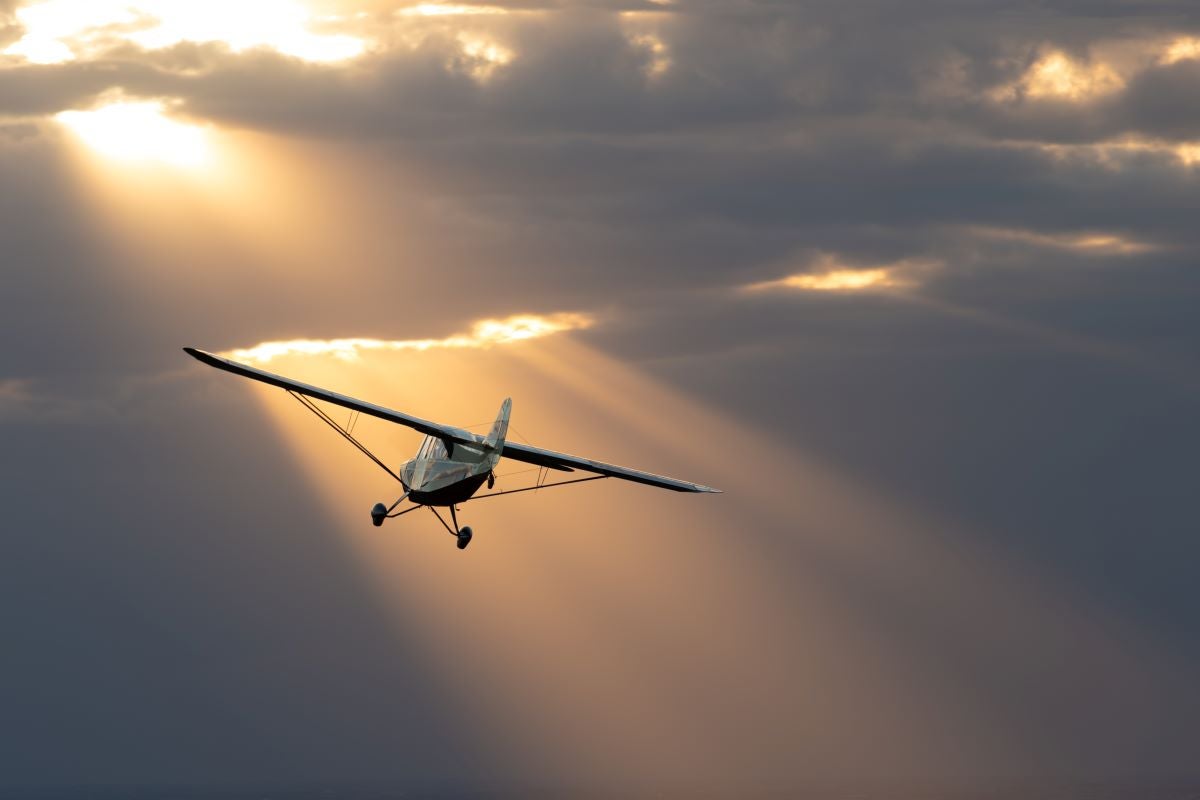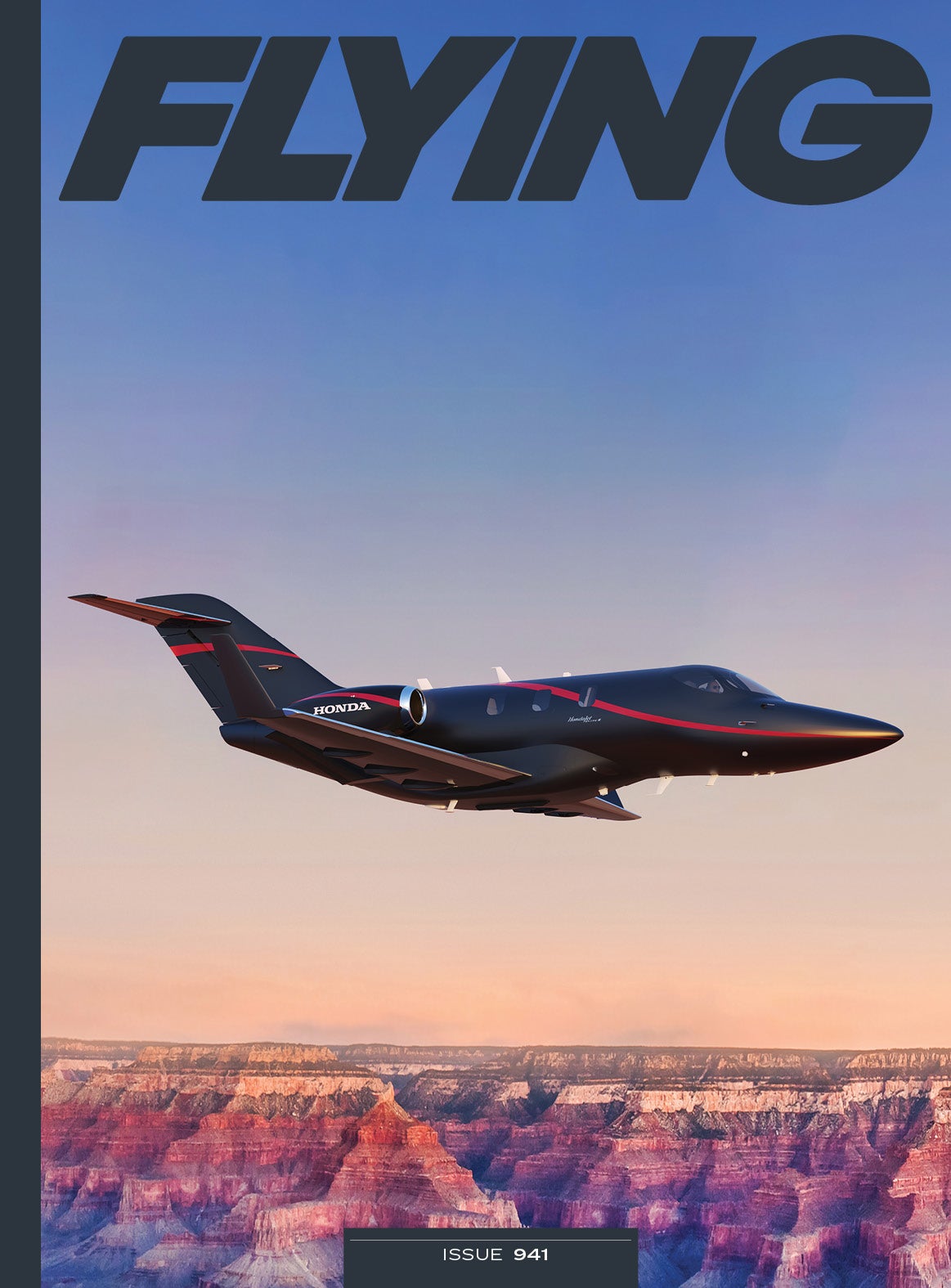Do you remember your first flight lesson? Philip Preston of Machesney Park, Illinois, certainly does. He remembers it every time he goes out to his hangar and sees the fully restored 1946 Aeronca Champ sitting there—it’s the very same aircraft he made his first flight in as an anxious 12-year-old in 1968.
“My dad took me and my brother David—who was 13 at the time—to the airport for a flight lesson. My brother went first, then I went. I sat in the front, no headset. I had never been in an airplane and it was overwhelming the senses, [with] the hand-propping noise and vibration and the fabric. It was totally otherworldly and exhilarating and frightening.”
If you’re not already a subscriber, what are you waiting for? Subscribe today to get the issue as soon as it is released in either Print or Digital formats.
Both the Preston boys were interested in aviation, but, as Philip points out, they did not come from one of those families where their parents paid for their hobbies. As a result, both Philip and his brother worked their way through flight training. David went on to become an airline pilot, eventually retiring from American Airlines, and Philip—although he loved to fly—had bigger dreams. “So I hitchhiked down the road to the University of Illinois,” he says. “My dream was to start a business and live in a house on an airport—and that all started with the Champ.”
A Dream Comes True
With an engineering degree in hand, Philip Preston started a plastics company that makes, among other things, parts for commercial aircraft—and those clear plastic doors you see on slushie and soft-serve ice cream machines.

“You have probably seen what the company makes,” he says. “I started Littlestar Plastics in 1991, making aerospace parts like for the [Boeing] 787 and 777X, and lots of ice cream machine parts. I built the company up from nothing, and when I sold just before the pandemic hit, it had 55 employees.”
The business allowed Preston to pursue flight training. He earned his private pilot certificate in 1977 but didn’t buy his first airplane, a Grumman Tiger, until 1997. A series of aircraft followed, including a Cirrus SR20 and a Waco UPF-7, which he purchased as a project.
“I took the UPF-7 and shipped the aircraft to Waco Aircraft Corp. for restoration. They take airplanes to Oshkosh every year, and every year they get [awarded] Grand Champion. I like things done right and will spend the money to get it right.” More aircraft followed, including a 1967 Cessna 310L, a 1980 Cessna R182RG, and a 2012 Tecnam P92 taildragger. The plastics company also gave him the resources to have the home he wanted on an airpark.

He resides at BelAir Estates, located at Poplar Grove Airport (C77), a privately-owned, public-use airfield three miles south of Poplar Grove, Illinois. The airport is also home to the Poplar Grove Vintage Wings and Wheels Museum. The museum focuses on personal transportation from 1903 to 1957, and according to Preston, there is a diversity of aircraft in the airpark community with a heavy emphasis on vintage designs.
One day in 2019, he saw an Aeronca Champ project one of his neighbors was working on and realized it was the very same Aeronca Champ he’d taken his first flight in—the 1946 Aeronca 7AC, NC81986, serial no. 611.
“It was 54 years later and a mere 100 yards from my hangar,” he says. He had wondered what the airplane had been through in those 50-plus years. “The owner told me he planned to restore it. I told him to give me a call when he had [the project completed], and then one day, I heard from someone at the airport that he had sold his house and his hangar and was going to put the airplane in storage.”

Right Place, Right Time
Fortunately for Preston, the owner of the Champ changed his mind, and in July 2019, Preston purchased the project. “It was in pieces and stripped of fabric,” he says.
Preston opted to have Jerry Stadtmiller of Bipe Inc., out of North Carolina, finish the restoration job for him. “I wanted it done right,” he recalls. “The recovering and paint on the Champ ran about $20,000 to $30,000. A lot of the Champs out there are [only] worth $20,000 to $30,000.”
According to the company website, Bipe, Inc. focuses on “museum quality” restorations for antique aircraft. Jerry Stadtmiller turns out to be the owner. He holds multiple pilot certificates in addition to an A&P/IA, and says the company specializes in vintage aircraft.
“Basically anything that is fabric covered,” Stadtmiller said in an interview. The shop is at Andrews Murphy Airport (KRHP) in Andrews, North Carolina.

During the restoration project, Stadtmiller kept in contact with Preston, keeping him apprised of the progress. The aircraft was restored to “as original as practical,” which usually means the fabric covering uses modern materials, and the cockpit instruments are overhauled vintage pieces. Parts are sometimes hard to find, he says, but as he has been in the business so long, he has his ways.
When it came time to paint the aircraft, Preston wanted to do something other than the yellow and orange that most Champs wear. He wasn’t sure which way to go, then a friend gave him a book that inspired him. “The book had a picture of a 1951 sedan that was painted blue and straw, and I liked that, so I copied that for the paint scheme.”
You won’t find any space-age glass like the kind Preston’s company manufactured in this model. Instead, he was adamant that the instruments be period-correct. That limits the aircraft to daytime VFR conditions, which is fine, he says, as this is an airplane you take out on good days for fun. The range of the Champ is about 120 miles.
Both of these things made the flight home from North Carolina a bit of a challenge.
“I brought it home in August of 2022. I had to make nine fuel stops, and since the airplane is daytime VFR only, I was racing the sun. There is no electrical system in the airplane,” he says.

“I got to Danville, Illinois, at 7:10 p.m. I was 5 minutes from home, but the sun was setting. The next morning when the sun came up, I headed home. Prior to that flight, I had not flown a Champ since 1968.” The airplane is easy to fly, he says. “That airplane flies hands and feet off because it is so stable. The flight home from North Carolina at 80 mph was like a 10-hour reacquaintance flight. I had the window open, and it was like driving a sports car. I was really happy with it.”
The Champ missed EAA AirVenture 2022, but Preston is considering taking his new pride and joy to AirVenture in 2023 to see how it stacks up against the other vintage designs. He’s come home from the big show with honors before, he notes. “In 2016, I had a 1967 Cessna 310L that won best Twin Cessna at AirVenture, and it was on the cover of Twin Cessna Flyer.
“I was drawn to the Cessna 310 because it was one of the airplanes I saw on the cover of FLYING magazine in my youth.”

A First Solo in the Aeronca Champion…
In the April 1973 issue of FLYING, former editor-in- chief Richard L . Collins waxed nostalgic about his first solo flight in the Aeronca Champion.
“My teacher was a man named Rudy Peace: patient, a natural pilot, and a confidence-inspiring individual. All were necessary attributes as he taught me to fly, too, for patience is necessary when teaching a 17-year- old to do anything. Natural flying ability protected him from my many goofs, and his ability to inspire confidence prevented a mutiny when he told me to fly the Aeronca Champion around the airport by myself.
“The old Champion had its own virtues, and combined with my instructor’s skill, they make October 25, 1951, a pleasant day to remember. Some like to refer to a good airplane as being forgiving , and that’s an okay way to say it. The Champion forgave my total lack of attention to the good and holy principles of the three-point landing; in fact, it forgave three times that day. Afterward, one nervous teenager had his shirttail removed, and one relieved flight instructor gratefully accepted the fifth of bourbon that was, by custom, presented to instructors as they survived first solo flights.”
This article was originally published in the March 2023 Issue 935 of FLYING.

